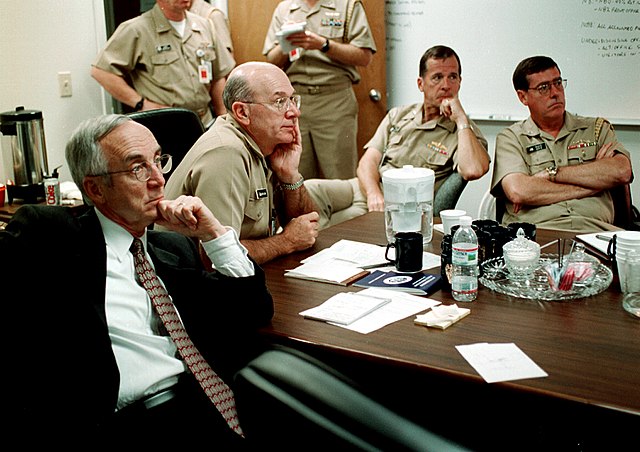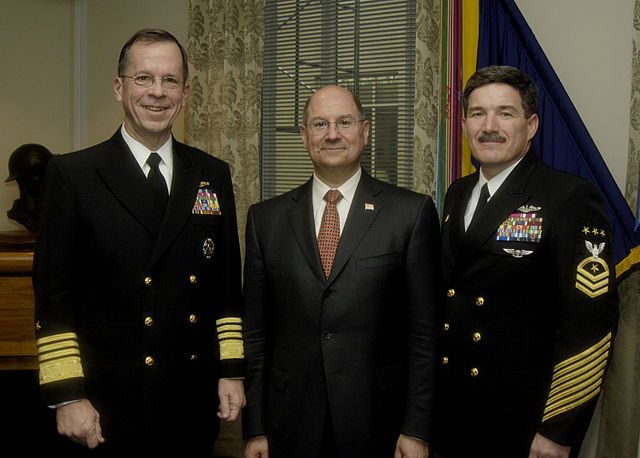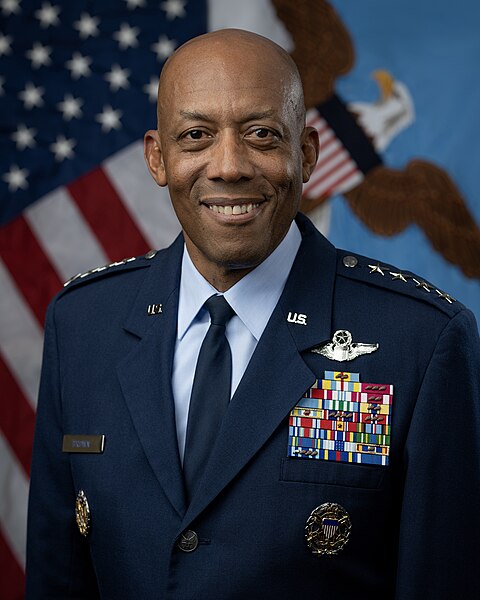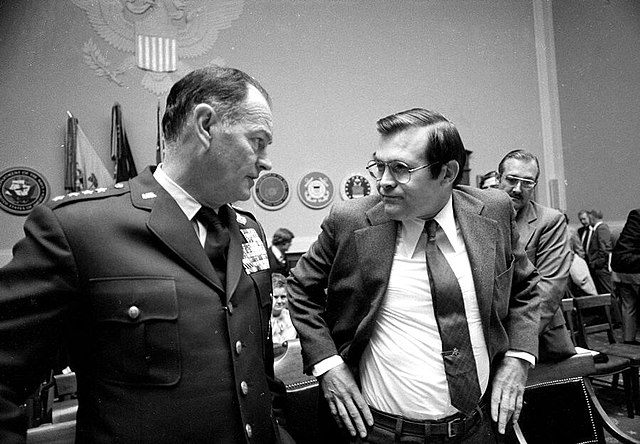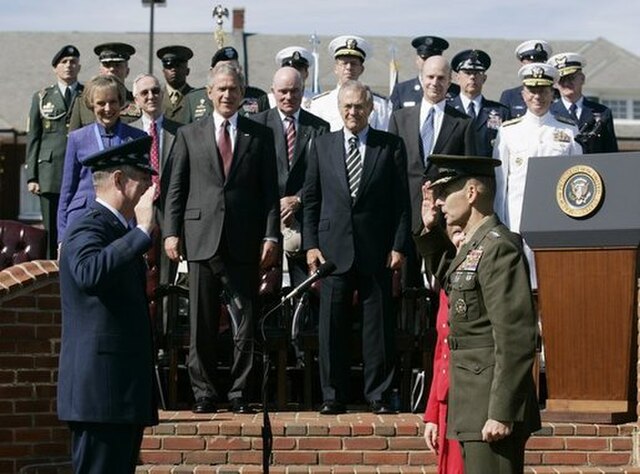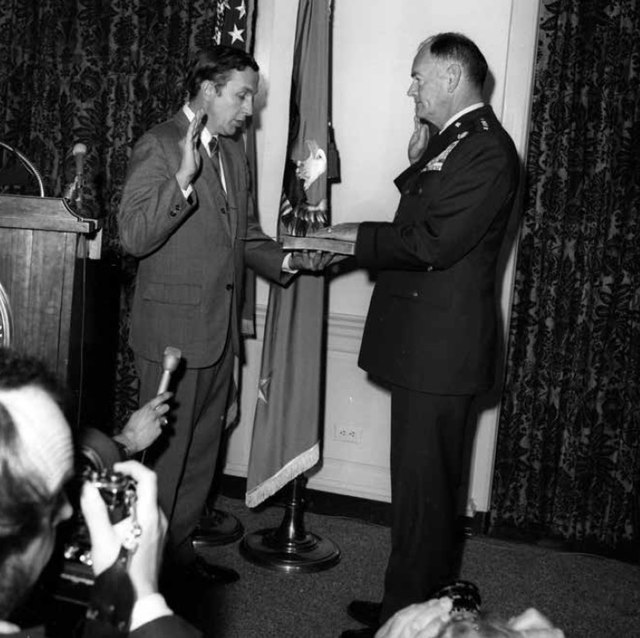Michael Glenn Mullen is a retired United States Navy admiral who served as the 17th chairman of the Joint Chiefs of Staff from October 2007 to September 2011.
Mullen in September 2007
Mullen (seated third from left) at the Pentagon during the September 11 attacks in 2001
Then-Chief of Naval Operations, Admiral Mullen with Secretary of the Navy Donald Winter and MCPON Terry D. Scott, February 2006
Mullen awarding U.S. Army captain Gregory Ambrosia the Silver Star at Korengal Outpost, Afghanistan, July 11, 2008
Chairman of the Joint Chiefs of Staff
The chairman of the Joint Chiefs of Staff (CJCS) is the presiding officer of the Joint Chiefs of Staff (JCS). The chairman is the highest-ranking and most senior military officer in the United States Armed Forces and the principal military advisor to the president, the National Security Council, the Homeland Security Council, and the secretary of defense. While the chairman of the Joint Chiefs of Staff outranks all other commissioned officers, the chairman is prohibited by law from having operational command authority over the armed forces; however, the chairman assists the president and the secretary of defense in exercising their command functions.
Chairman of the Joint Chiefs of Staff
JCS chairman General George S. Brown with Secretary of Defense Donald Rumsfeld during testimony before the Senate Armed Services Committee on January 15, 1976.
Outgoing Chairman of the Joint Chiefs of Staff, General Richard Myers swears in the incoming chairman, General Peter Pace as President George W. Bush and Secretary of Defense Donald Rumsfeld look on at the change of command ceremony at Fort Myer, Virginia on September 30, 2005.
General George S. Brown is sworn in as chairman of the Joint Chiefs of Staff by Department of Defense General Counsel Martin Hoffman in the Pentagon on July 1, 1974.


